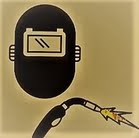Delta ferrite importance in SS welding
Role of Delta Ferrite in Stainless Steel Welding
Delta ferrite is a type of ferrite, a crystalline structure that forms during the solidification of some metals and alloys, including stainless steel. The presence of delta ferrite in a welded joint of stainless steel is important because it affects the mechanical properties and corrosion resistance of the welded joint.
